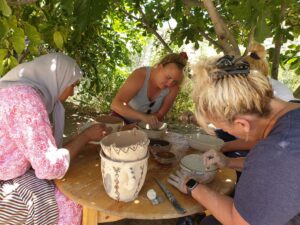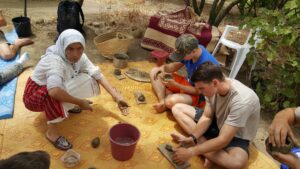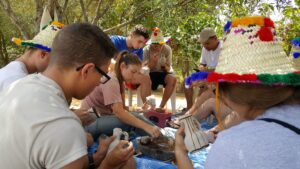Nestled within the rugged landscapes of northern Morocco, the Rif region harbors a timeless tradition that speaks through hands, earth, and fire: the art of Rif pottery. This ancestral craft, preserved across generations—particularly by Amazigh (Berber) women—is far more than a means of creating utensils; it is a vibrant expression of culture, memory, and identity. With techniques rooted in simplicity and symbolism, Rif pottery continues to shape not just objects, but the very soul of a community.
A Craft Rooted in Daily Life and Celebration
Rif pottery is intimately tied to the rhythm of life in the region. While the vessels serve practical purposes—storing food, cooking, or carrying water—they also play crucial roles in ceremonial life. At weddings, intricately crafted pots are offered as part of the bride’s dowry, symbolizing fertility, domestic readiness, and the start of a new chapter. During seasonal festivals, pottery items become tools for communal rituals, food offerings, and feasts, linking families to the earth and to each other.
Each object is imbued with symbolic value. The designs are more than aesthetic choices; they are visual narratives passed from mother to daughter, marking family lineage and preserving oral traditions in a tactile form.
Step-by-Step: The Making of Rif Pottery
1. Sourcing the Clay
The process begins in nature. Artisans gather three distinct types of clay from the surrounding landscape, each with specific properties. These are blended in precise proportions—an inherited knowledge that ensures optimal texture and durability.
2. Preparing the Clay
Back in the workshop, the raw clay is pounded with heavy wooden sticks to break it down, then sifted to eliminate impurities like pebbles and roots. Water is gradually added until the mixture becomes smooth, soft, and elastic. This prepared clay is then left to rest for several days to improve its consistency.
3. Shaping by Hand
Unlike mass-produced ceramics, Rif pottery is shaped entirely by hand. Artisans use coiling techniques—rolling long strands of clay and layering them to build the desired form. This meticulous, hands-on process allows for creative expression and connects the maker directly with generations past.
4. Sun Drying
Once shaped, the pottery is laid out under the sun to dry slowly over several days. This natural drying phase is essential to prevent cracking and ensure that the piece maintains its structure for the next stages.
5. White Clay Polishing
After the first drying, the pottery is coated with a fine white slip made from creamy clay sourced nearby. This layer serves both decorative and functional purposes, giving the surface a smooth, polished appearance. Artisans often use stones to burnish the pottery, enhancing its natural sheen. The pieces are then sun-dried once more.
6. Natural Pigment Decoration
Decoration begins once the piece is fully dry. The pigments used are derived from nature: black from carbon or charcoal, yellow from clay deposits, and red from ground stones found in riverbeds. These natural elements are ground into powders, mixed with water, and painted using twigs or handmade brushes. Common motifs include:
- Triangles: symbols of femininity and fertility
- Zigzags: representations of water, life, and protection
- Dots and lines: expressions of balance, continuity, and community
These motifs are more than mere decoration—they are visual language.
7. Final Firing
The final transformation takes place overnight. The decorated pottery is placed in a fire pit and baked using an open flame, often fueled by wood and natural materials. This crucial step not only hardens the pottery but completes its journey from raw earth to cultural artifact.
More Than Craft: A Cultural Legacy
Every pot, bowl, and jar carries with it a story—of the artisan, the land, and a shared history. Rif pottery stands as a living legacy, a reflection of human connection to nature and tradition. No two pieces are alike, for each is shaped by hand, spirit, and circumstance.
By continuing to practice and teach these methods, artisan families uphold a rich, tactile form of storytelling. Through workshops, educational programs, and community events, new generations are invited to touch, feel, and understand a piece of their heritage.
In a world leaning toward industrial production, Rif pottery remains a powerful reminder: sometimes, the most meaningful creations are those shaped slowly, lovingly, and by hand. It is not merely a skill—it is a living story etched in clay.











